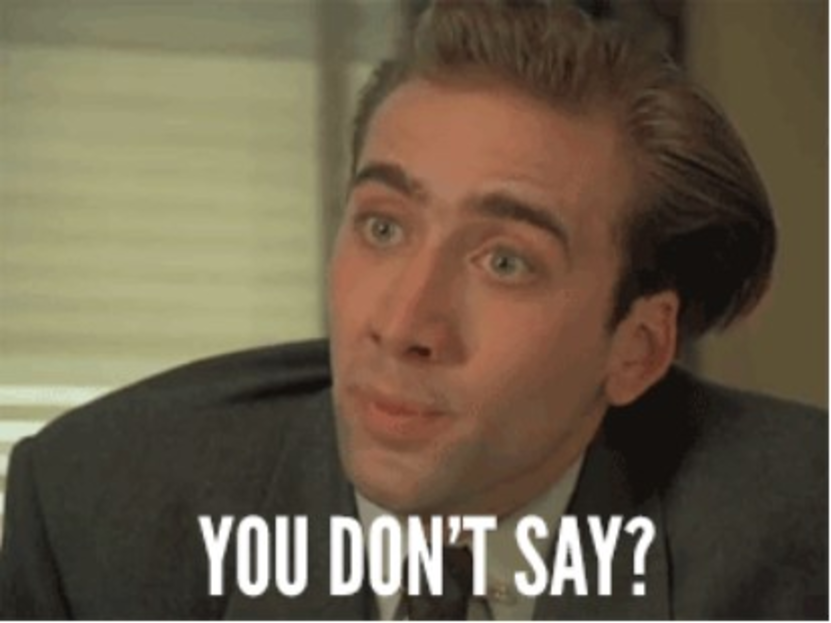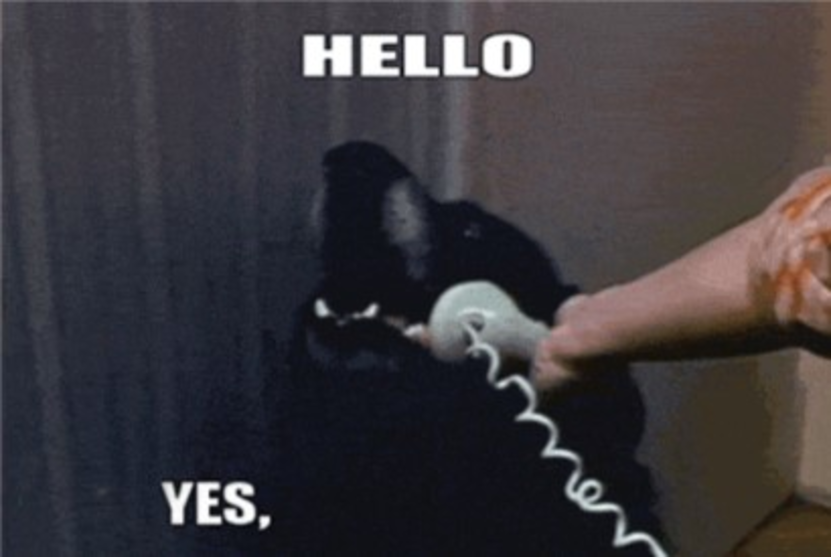87 Open-Ended Sales Questions You Should Ask For Every Buying Cycle

Capturing leads is easy; qualifying and nurturing them until they turn into buyers is hard.
Consider this: in the B2B software industry, the conversion rate from visitor to lead is 7%, but from visitor to close is a measly 0.68%.
The lead qualification, nurturing and closing process depends on customer insight. Simply put, the more you know about your leads, the better you can serve them.
And to get this customer insight, you’ll have to ask a lot of questions.
By carefully listening to what your prospects have to say - and offering insight and comments when appropriate - you can not only learn more about your prospects, but also build rapport.
In this post, I’ll share 80+ open-ended questions you can ask for every stage of the buying cycle, from qualification to closing.
On this page:
Open-ended vs. closed-ended sales questions
In sales terminology, a question can be either open-ended or closed-ended.
An open-ended question is designed for discovery. A closed-ended question, on the other hand, is designed to get precise answers.
Let’s learn more about these two question types, and when to use them.
What are open-ended sales questions?
An open-ended sales question is usually a probing question aimed at getting a prospect to talk more about his business, his problems, and his wants.
As you might expect from the name itself, these questions are “open”, that is, they don’t have any specific answers. You’ll use them to initiate a discussion and to learn more about a prospect, especially during the nurturing and closing stages.
For instance, here’s an open-ended question:
“What do you think will be your biggest challenge this year?”
Unless a prospect is particularly reticent, it’s hard to give a one-word answer to this question.
Compare that with this question:
“Is there a specific challenge that is holding back your business?”
A prospect can easily answer this with a yes/no. By focusing on a specific problem, it discourages prospects from talking about their businesses.
In fact, there’s a simple way to differentiate between an open-ended and a closed-ended question: the former tend to start with words like “what”, “why”, and “how”.
When to ask open-ended sales questions?
Open-ended questions essentially do three things:
- They help you understand a business better
- They help you build rapport with a prospect
- They help kickstart more meaningful discussions
Since open-ended questions lead to long discussions, they are poor tools for getting specific answers from leads.
For instance, if you want to figure out whether a business is large enough for your solution, you don’t want to ask what its biggest challenges are; you want to ask - “how many people work with you?”
While you’ll still want to use some open-ended questions during lead qualification, they’re best employed for nurturing and eventually, closing leads.
What are closed-ended sales questions?
Closed-ended questions, as you might have guessed, are the opposite of open-ended questions.

The face you’re probably making right now….
That is, they are designed to get short, specific answers, not initiate long discussions.
For example, “Which option would you like to start with?” is a close-ended question. A prospect can answer it with a single word.
Closed-ended questions typically start with a verb like “are”, “is”, “did”, etc. Like:
- Is this a good time to talk?
- Did you get a copy of our latest eBook?
Think of any question that can be answered with a yes/no - you can classify it as a closed-ended question.
When to use closed-ended questions
Closed-ended questions are valuable for getting quick, exact answers to questions. They are usually used to:
- Get hard data from a lead (“Which vendor are you using currently?”)
- Get functional answers (“Is there a way to reschedule this meeting for tomorrow?”)
- Move the sales process forward (“Are you ready to move forward with this?”)
You’ll use closed-ended questions throughout the sales process - to qualify leads by collecting hard data and to move the sales process forward in later stages.
Beware of “false” open-ended questions
Before we jump off to the next section, there’s something I need to point out: a lot of open-ended questions are actually closed-ended questions in disguise.
You might even call them “false” open questions.
For instance, think of a question like “Are there any particular issues you’d want me to address?”. On paper, this sounds like an open-ended question. You are asking the prospect about his problems and what you can do to solve them.
However, a client can easily answer this question with a yes/no. The question is framed in such a way that it doesn’t encourage discussion. Even if the prospect wants to talk more, the “is there?” part of the question makes it hard to give anything other than a yes/no answer.
Instead, if you frame the question like this - “What are some specific issues you’d want me to address?” - you make it hard for prospects to give a yes/no response.
So think of this before you pop an open-ended question. It doesn’t matter how broad the question is, if it can be answered with a yes/no, it is actually a closed-ended question.
What NOT to do when asking open-ended sales questions
Open-ended questions are a staple of any sales process, but it’s easy to mess them up by being robotic, impatient or inattentive.
Here are some things you must absolutely avoid when asking open-ended, probing sales questions:
1. Don’t interrogate your prospects
I’m sure you’ve been on the opposite end of a poor sales pitch that felt more like an interrogation. The salesperson probably asked far too many questions that probed a little too much, too fast into your business, and your life.

That’s you when you’re interrogating prospects
This is something you must avoid at all costs.
Although open-ended questions are designed to probe a prospect, they need to be used judiciously. Follow up far too many such questions back to back and your prospect might just feel like they are being interrogated.
This can actually have the opposite effect; prospects who feel they are being interrogated are more reluctant to talk.
Instead, pace out your questions. Ask an open-ended question, then follow it up with a closed-ended question, an anecdote or something completely unrelated.
The more you can help the prospect relax, the more they’ll be willing to talk.
2. Don’t run through a list of robotic questions
The surest sign of an amateur salesperson is if they run through a list of questions one-by-one without adding anything to the conversation.
When this happens, the prospect might just feel that they are being subject to a phone survey by an automated caller, not a real person.

I know it's you dog
Remember: an open-ended sales question is meant to start a discussion. It’s a dialog, not a monolog. For every answer you get, add something of your own - some personal insight or anecdote that makes the prospect feel at ease.
While we’ll share a whole bunch of open-ended questions later in this article, don’t just ask them one-by-one.
Instead, use them to lead conversations.
3. Don’t fake the same response to every question
Here’s another sign of an amateur - for every answer they get, they respond with an overly enthusiastic “great!” before jumping off to the next question.
Variations of “great!” include “awesome!”, “that’s amazing!”, and “oh wow!” - all said with the same degree of faux enthusiasm.
Most B2B decision makers have spoken to dozens of salespeople. They can smell fake enthusiasm before you even finish your first syllable. They can tell that “great!” in response to an answer is an empty word. It doesn’t mean anything; it’s just meant to kick the talk to the next question.
Instead, listen intently and offer a genuine response to a prospect’s answers. It doesn’t have to be long; a quick two-sentence insight works well enough.
As long as you can avoid the “great!” response (and variations thereof), you’re good.
4. Don’t answer your own questions (or offer suggestions)
Sometimes, it can be tempting to pop a question and answer it yourself based on what you already know about similar prospects.
For instance, you might ask - “What are some challenges you hope to overcome this year?” - and add something about how “most of our customers go through these X challenges”.
This hampers discovery. If the prospect wanted to talk about Y, but heard you mention X, they might give you a different answer than what they originally intended.
Refrain from adding any specific suggestions to a question. Instead, let the prospect arrive at an answer himself.
5. Not giving the prospect time to respond
Salespeople who are in a hurry to meet their activity goals for the day often make this mistake - they ask a question, then jump to another one before the prospect has even had time to answer properly.
You can see why this can backfire easily. Interrupting a prospect when he is about to share some insight can actually hurt rapport and discovery.
Also, understand that prospects don’t always answer a question in one go. In a free-wheeling discussion, they might jump back to a previous question if they find something pertinent.
If this happens, interrupting them to bring their focus back to the present question can be counter-productive. After all, your objective is to learn more about the prospect; what order this insight comes in is immaterial.
6. Not listening to the prospect
As any salesperson worth his bonus will tell you, much of sales is simply listening to your prospects.
This doesn’t simply mean hearing words; it means actively listening to your prospects.
Active listening is when you take what a prospect says, understand it, and contribute something to the discussion which causes the prospect to talk more.
Say, if a prospect says that they had a problem with their servers last month, you might add - “that’s interesting - one of our customers faced something similar with their hosting provider a couple of months ago” - to show that you are engaging with what they have to say.
This is one of the core tenets of selling, and a critical component of any probing question. Not listening will seriously undermine the impact of your open-ended questions.
7. Don’t give a solution
If a prospect says they have a problem, it’s natural to jump in and offer a solution. That’s what salespeople are for, after all.
Right?
Wrong. While your ultimate goal is to solve the customer’s problems, the open-ended question is meant for discovery. Your aim here is to learn as much as you can about the customer’s problems. Offering a solution at this stage will invariably lead to poor results since you don’t know the problem completely.
Not to mention, the open-ended question phase is usually handled by SDRs whose responsibility is to develop a prospect for closing.
So resist the urge to offer a solution when you first hear about a problem. Instead, prod them to talk more about it so you can develop a more fitting solution.
What you should do instead
That takes care of the DON’Ts of asking open-ended questions.
What about the DOs?
Let’s look at a few of these below:
1. Do elicit answers instead of interpreting them
Think of how a skilled talk show host interviews his guests. He doesn’t try to explain or interpret the guest’s answers for his audience. Instead, he might share an anecdote or ask another question to get the guest to talk more. The guest explains the answer himself; the host only acts as a conduit to elicit answers.
Adopt the same mentality when you’re asking open-ended questions to your prospects. Don’t try to explain or interpret the answers you get - that part comes later. Instead, probe further and get the prospect to give even more details.
It’s a good idea to create a framework where you always have a follow-up question or response that gets the prospect to talk further.
For instance, you might have these three questions in a set:
- “What are some of the challenges you hope to solve this year” - Broad question that gets the prospect to talk about his challenges.
- “What did you do to solve this [specific] challenge last year?” - Move from a broad to a specific question.
- “What kind of results did you see from this solution?” - Goes even more specific and shifts the focus towards the solution. This makes it possible to plug your own product into the conversation.
The broad -> narrow framework works in most settings. It avoids interpretation and gets prospects to talk more.
2. Be curious (even if it doesn’t directly relate to your business)
Good salespeople tend to be good listeners, and good listeners almost always tend to be curious.
Curiosity gets prospects to talk more about their business and its issues. It also builds rapport; the more prospects can talk about their problems, the more likely they are to trust you.
Keep in mind that curiosity must be genuine (or at least appear so). If you’re only “curious” about the prospect’s business as it relates to your product, you aren’t really curious; you’re just pushing for a sale.
Prospects can see through this very quickly.

They can see right through you
This is why you must strive to show a genuine interest in the prospect and his business, even if it doesn’t directly relate to your product.
For instance, if you sell email marketing and the prospect starts talking about the shipping issues at his eCommerce business, don’t drag the conversation back to email; ask more about their shipping issues instead.
This might not lead the conversation directly towards a sale, but it will do a lot to build rapport and increase your trustworthiness.
3. Do personalize your questions and responses
Personalization is one of the obvious truths of sales, yet so many people seem to miss it. You can’t really hope to understand your prospects if you ask them generic questions pulled from a template.
Every question you ask must be personalized to:
- The prospect’s business, i.e. the business’ name, size, and needs.
- The current stage of the sales cycle, i.e. whether the prospect is in the qualification/nurturing/closing stage
- The context of the conversation, i.e. what you talked about in your last conversation(s)
For instance, if you’ve already asked the prospect about a problem in your last conversation, don’t ask him the same question again.
4. Do practice the art of “strategic silence”
People new to sales think that great salespeople sell more because they know how to talk well.
The truth is that great salespeople sell more because they know when to be silent.
“Strategic silence” is when you intentionally keep quiet to get a prospect to reveal something or make a move.
For instance, if a prospect is talking about his business and stops mid-conversation, staying silent can actually get him to talk more.

It’ll be worth it I promise
Knowing when to stay silent and when to speak is usually a combination of intuition and experience. But in case you’re not sure, it’s always better to err on the side of silence during lulls in the conversation.
Open-ended sales questions to ask
You now know what open-ended sales questions are and when to use them.
As a start, try asking some of the questions below in different stages of the buying cycle:
1. Buying history questions
Ask these questions if you want to know the prospect’s buying history and habits:
- Where were your past experiences - good, bad or neutral - buying this product type? Example: “What were your past experiences buying cars?”
- When was the last time you bought a [product type]?
- What was your process in the past to buy this [product type]?
- Did your purchase process work well for you, i.e. were you satisfied with your process? Why/Why not?
- What measures have you taken to fix your problems - if any - with your current [product type]?
- Have you purchased anything from us before? If yes, what?
- What was your experience with that purchase?
2. Get-them-to-talk-more questions
These questions are great for getting the prospect to talk more.
- How is your business these days? What has changed since our last conversation?
- What are you doing this weekend?
- It was great hearing about your background in our last phone chat, but since we’re out for lunch, I’d love to hear the longer version. What’s your story?
- Is there anyone else involved in this purchasing decision?
3. Finding their pain-point questions
These questions are great to find their burning pain-points.
- What issues do you have with this particular technology/product/service? Why isn’t it working out for you right now?
- Most clients report a problem with A, B or C with this particular technology/product. Have you faced similar problems as well? What do you think about them?
- What's holding you back from meeting your goals (revenue, profit, etc.)?
- What goals do you hope to accomplish in the short-term and long-term?
- What are your goals in general? What are your goals associated with this technology/product/service?
- What are the most important projects that you’re working on right now?
- (If they set the meeting) Why did you ask to meet with me today? What problem can I help you with?
- (If you set the meeting) As per our previous conversation, I’d like to share some ideas about how we helped our clients succeed with A, B, and C. But before we get started, I’d like to ask - what else would you like me to cover? What can I do to make this a successful meeting for you?
4. Finding the significance of your solution questions
What would be the potential impact of your solution on the prospect’s business?
Getting an answer to this question can help you understand how important your solution is to the prospect. It can also help you price your solution better.
Here are a few questions to figure this out:
- If you could solve the problems we discussed earlier, how would it impact your business’ financial situation?
- If you could solve these problems, how would it impact you personally? What would it mean to overcome this challenge at a personal level?
- If you could implement these changes, how would it affect your competitiveness in the market?
- How would your board of directors react if you could overcome this challenge?
- How would not being able to solve this problem affect you and your business going forward?
- If you were in my position, what would be your next few steps?
5. “Imagine if...” questions
The idea behind these questions is to get your prospects to think about your solution and how it can improve their lives.
- How will this look different 3 years from now if you could solve this problem?
- (In early discussions) You mentioned problems with your existing provider. If you work with us, what do you hope will be different?
- (In later discussions) Based on our past conversations, what do you see as being different if we were to go ahead with this together?
- How would you define success - for yourself, your business, and our work together?
- If you could imagine a situation where you have no restrictions, what would you change? Can you tell me why you would do that?
6. Clarifying questions
Ask these questions if you want the prospect to clarify or expand on an answer:
- Can you tell me more about that?
- Can you give me an example of [x]?
- Can you be more specific about [x]
- How did that affect you - personally, as a team and as a business?
7. Objection-seeking Questions
The purpose of these questions is to determine specific objections to your proposal so you can mitigate them.
Try asking these:
- What do you think about this so far?
- Do you have any concerns or issues so far?
- What other areas would you like to discuss moving forward?
- Is there any reason for us not to move forward with this discussion?
- Who do you work with right now? How did they get your business? What can I do to get it instead?
- Can you tell me why you didn’t choose us (in the past)?
8. Information-gathering questions
These are pretty self-explanatory - ask these questions to figure out key information about your prospects, such as their budgets, purchase process, etc.
- What was your reason to look into this?
- What do you expect from this product/ service?
- What steps and processes did you follow to determine your needs?
- How do you foresee this happening going forward?
- What would you like to see accomplished?
- Which vendor/provider did you have success with in the past?
- Which vendor/provider have you had problems with in the past?
- Can you help me understand that a little better?
- What does that mean?
- If you’ve changed the process, how does it work now?
- What are your primary challenges with this process?
- What challenges has this process created in the past?
- What are the pros of this process? If you could take just the best parts from the process, what would they be?
- What other issues/concerns should we discuss?
- Do you have a budget or range in mind?
- What would be a good time for me to call you back?
- What do you feel is your business's greatest strength?
- What do you feel is your business’ biggest weakness?
- How do you evaluate the potential of new products or services?
- What do you like the most about your present vendor? What do you dislike?
- What might drive you to change your vendor?
- What do you like the most about your current system? What do you dislike? What would you want to see changed?
- What are your top priorities in any relationship with a vendor?
9. Qualifying questions
Is the prospect a good candidate for your solution? Should you push the lead further down the funnel or put it on hold for the moment?
Ask these questions to find out:
- What do you think our next steps should be?
- What is your expected timeline for implementing this solution?
- What else should we know before going forward?
- Have you established a budget for this?
- What do you think about [x] so far?
- Is there anyone else involved with this decision? Who?
- What would have to happen for this to no longer be a top priority?
- How have things changed since our last conversation?
- What are your top concerns?
- How do you define “success” when you’re buying?
- If you had to, what would you emphasize regarding price, quality, and service?
- What service level are you willing and comfortable paying for?
10. Closing questions
The most important part of the sales process - closing. Ask these questions when you’re trying to win a deal:
- Where and how did you hear about us?
- What are your top must-haves, should-haves, and could-haves with this solution?
- What does your decision-making process look like?
- Who are the top stakeholders for this deal to go through?
- Who else (vendor) are you comparing us against?
- What's your timeline for making a purchase decision?
- What other products/solutions are you currently using that our product has to integrate with?
- What kind of service or support do you think will help you become successful?
- What could impact the success of this deal? What might prevent it from happening?
- What caused you to reach out to us?
- What will it take for us to do business together?
- When can we begin?
Conclusion
How well you know your prospects will have a big impact on the success of your sales process. And to know your prospects better, you have to ask them probing sales questions.
In sales, these are called “open-ended questions”. Such questions are designed to get a prospect to talk more about his business and his problems.
Asking the right questions at the right time can build rapport, increase trustworthiness and reduce resistance. You’ll also learn much more about your prospects which can help you create better solutions.
Start by using some of the questions shared above in your sales process. Gauge the response and fine-tune accordingly.













